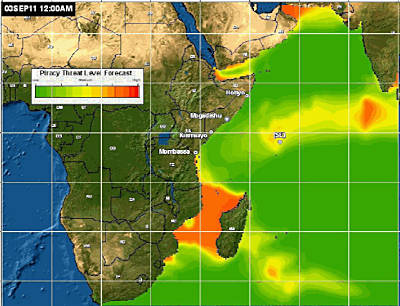WASHINGTON, March 17, 2011 — U.S. forces in Japan are engaged in one of the biggest natural and manmade disasters of a lifetime, Navy Adm. Robert F. Willard said here tonight.
Willard, commander of the U.S. Pacific Command, spoke over the phone from Hawaii to the Pentagon press corps about what the U.S. military is doing to help the Japanese Self-Defense Force respond to the disaster caused by the March 11 earthquake, tsunami and subsequent nuclear emergency.
“At U.S. Pacific Command we’re all very saddened by the tremendous losses that the Japanese have experienced,” Willard said, adding that he has served twice in Japan during his Navy career.
In an effort Pacom is calling Operation Tomodachi — the Japanese word for friendship — “we are placing our very highest priority on our operations in support of our ally Japan,” the admiral said.
Willard’s command has Navy, Air Force, Marine Corps, Army and Special Operations Command troops in Japan, Willard said, performing functions ranging from bringing food, water and other supplies to the more than 500,000 displaced citizens of northeast Honshu, Japan’s main island.
“We’re providing logistics support and in some cases direct support,” Willard said, noting that Gen. Ryoichi Oriki, the chief of staff of Japan’s Ground Self Defense Force and his troops are helping to mitigate situations near damaged nuclear power plants.
Willard said he and his wife will soon fly from Hawaii to Japan to “visit our forces and their families and engage our Japanese friends.”
“We’re confident that Japan will achieve a full recovery and we’ll do our utmost to ensure that happens,” he said.
Pacom has given Gen. Oriki “a long list of areas in which we believe we can help,” Willard said. “We’re also seeking additional ideas on unique technologies that we might bring in to help them with some of the most difficult parts of assessing the condition of the reactors and then responding to what they find.”
Willard said U.S. military forces have a multitude of capabilities that are being shared with the Japanese government and its military, and other organizations involved in the aid effort.
“We have tremendous logistics capabilities and we’re supplying relevant equipment to the Japanese as well as to U.S. government agencies as they come into support this effort,” he said.
Other U.S. capabilities, the admiral said, include radiological controls and teams in place to assist in everything from radiation monitoring to decontamination. Airborne systems are being flown on helicopters and airplanes to monitor radioactivity in the area.
“Where we encounter radiological effects we report those broadly within our own forces and to the Japanese,” Willard said.
Teams on the ground have monitoring equipment, he said, noting individuals are carrying dosimeters to monitor radioactivity and ships also can gauge such activity.
“We have assisted in bringing other systems into the country that are able to characterize some of the ground contamination should it occur,” the admiral said.
Those systems arrived into the region today, he said, and will fly on a regular basis to assist both the U.S. and Japanese governments in characterizing conditions around damaged nuclear facilities.
A nine-member team of military experts has arrived in Japan from U.S Northern Command to conduct a broad assessment of the situation throughout the disaster area, including the area around the damaged Fukushima Daiichi nuclear power plant, Willard said.
The team, he said, also will determine “whether or not we should rationalize bringing a larger force forward. I have requested a force of about 450 radiological and consequence management experts to be available to us there on a prepare-to-deploy order.”
Because of rising levels of radiation from the Fukushima plant, U.S. citizens are not allowed within 50 miles of the facility, Willard said.
“While the 50-mile limit is a good idea for much of the humanitarian assistance and disaster response effort that’s currently ongoing,” he added, “when necessary we will conduct operations inside that radius when they are in support of the Japanese Defense Forces.”
Willard said U.S. forces are working alongside people in organizations representing nearly 100 other countries that also are providing aid and support to the stricken Japanese populace.
“There’s a great synergy by the international community in this effort and we’re proud to be a part of it,” he said.
Source:
U.S. Department of Defense
Office of the Assistant Secretary of Defense (Public Affairs)

 von
von 